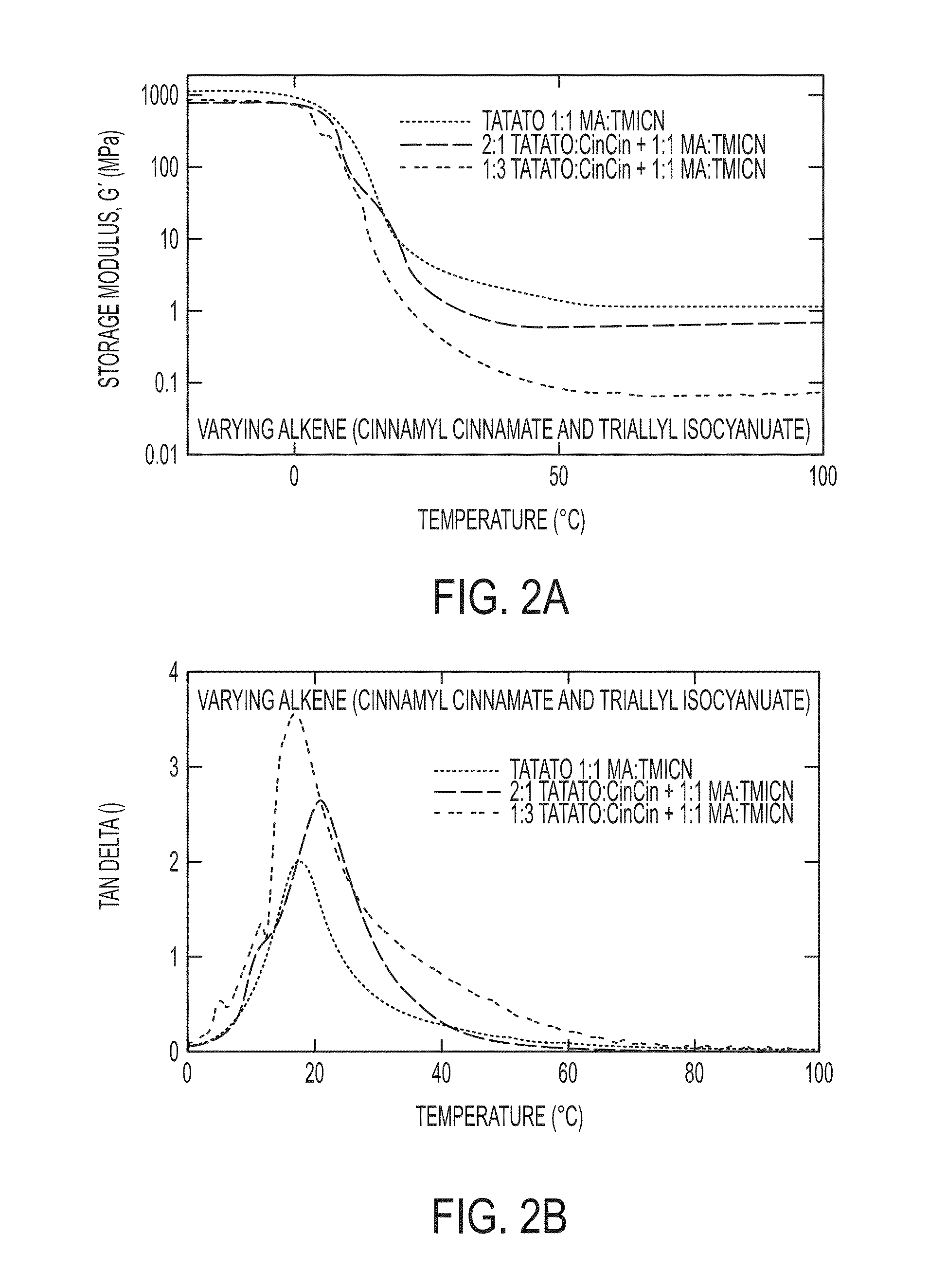Softening materials based on thiol-ene copolymers
a technology of thiol-ene copolymer and softening material, which is applied in the field of softening amorphous polymeric materials, can solve the problems of not being able to adapt to applications that require a lower modulus
- Summary
- Abstract
- Description
- Claims
- Application Information
AI Technical Summary
Benefits of technology
Problems solved by technology
Method used
Image
Examples
Embodiment Construction
[0011]Embodiments of the claimed invention are directed to polymers formed from a mixture of mutually miscible monomers that can be polymerized under ambient conditions and has a tangent delta, as measured by dynamic mechanical analysis at 1 Hz, ranging from 0.1 to 1.0 at both 20° C. and 37° C. In certain embodiments, at least one of the mutually miscible monomers is a multifunctional thiol monomer and at least one other is a multifunctional alkene. In other embodiments, at least one of the mutually miscible monomers is a multifunctional thiol monomer and at least one is a multifunctional alkene, where at least one of the functional C═C (carbon-carbon double bonds) is 1,2-substituted. In further embodiments, at least one of the mutually miscible monomers is a multi-functional thiol monomer and at least one is a multifunctional alkene, where at least two of the functional C═C (carbon-carbon double bonds) are 1,2-substituted.
[0012]In some embodiments of the claimed invention, at least...
PUM
| Property | Measurement | Unit |
|---|---|---|
| Temperature | aaaaa | aaaaa |
| Temperature | aaaaa | aaaaa |
| Pressure | aaaaa | aaaaa |
Abstract
Description
Claims
Application Information
 Login to View More
Login to View More - R&D
- Intellectual Property
- Life Sciences
- Materials
- Tech Scout
- Unparalleled Data Quality
- Higher Quality Content
- 60% Fewer Hallucinations
Browse by: Latest US Patents, China's latest patents, Technical Efficacy Thesaurus, Application Domain, Technology Topic, Popular Technical Reports.
© 2025 PatSnap. All rights reserved.Legal|Privacy policy|Modern Slavery Act Transparency Statement|Sitemap|About US| Contact US: help@patsnap.com



